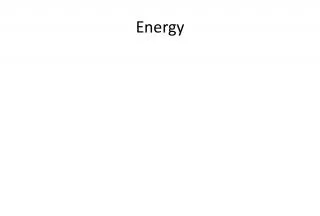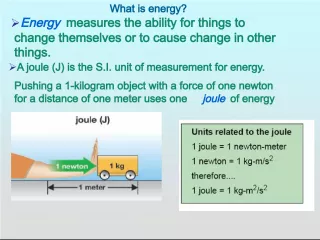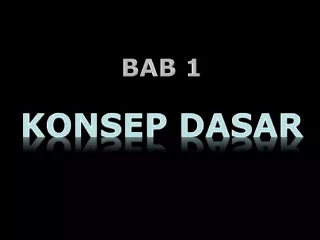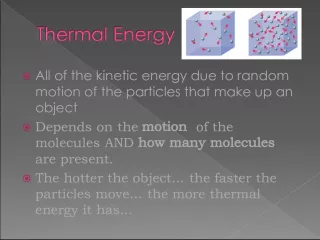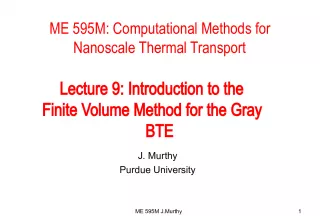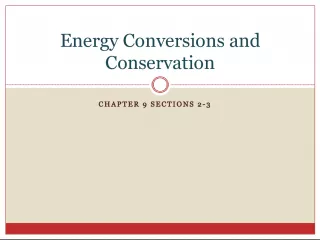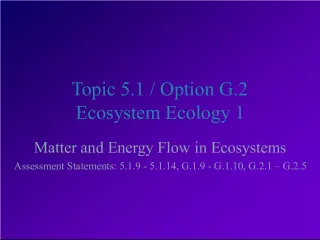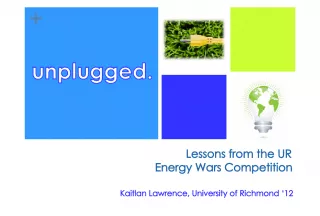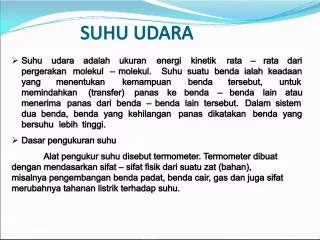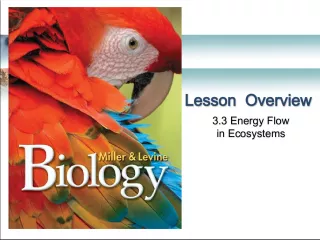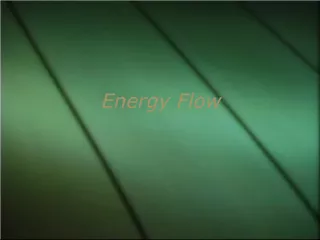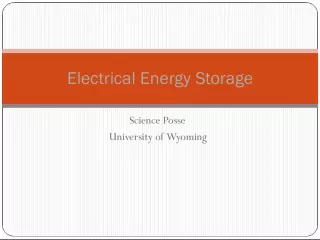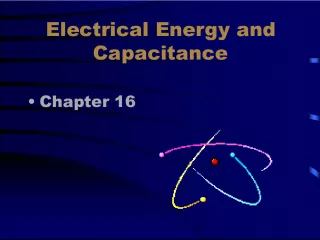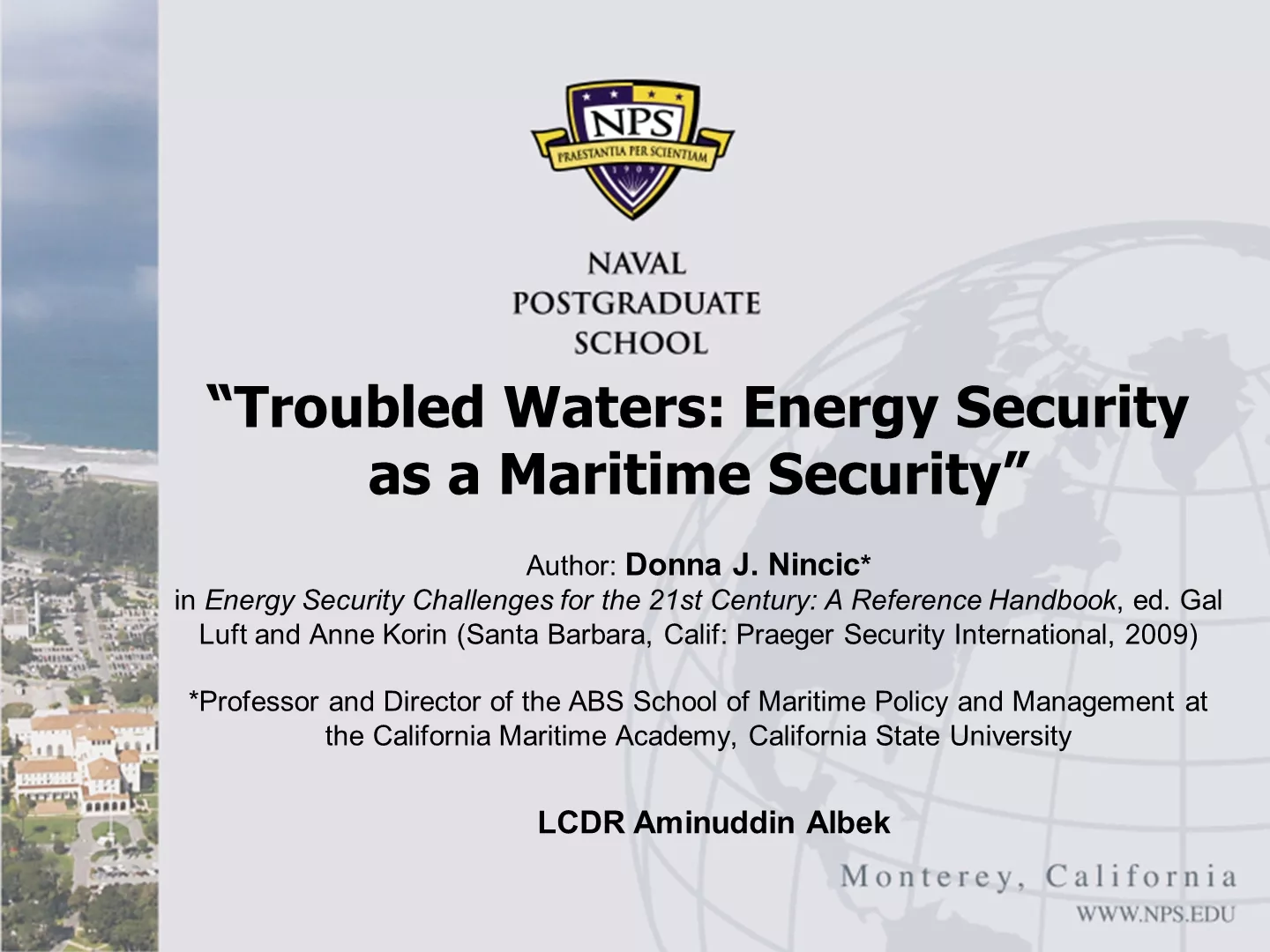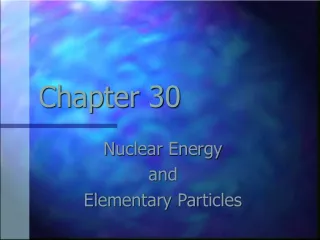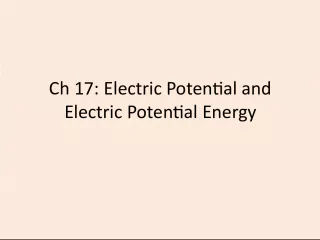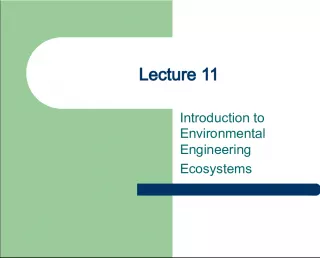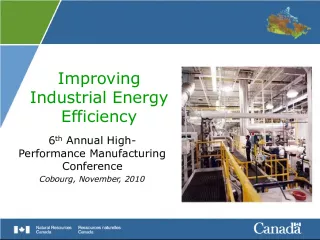Understanding Energy, Thermal Energy, and Temperature


This article provides a clear explanation of energy, thermal energy, and temperature, which are fundamental concepts in physics. Energy is defined as the ability to do work or to change something, which
- Uploaded on | 1 Views
-
 juliarice
juliarice
About Understanding Energy, Thermal Energy, and Temperature
PowerPoint presentation about 'Understanding Energy, Thermal Energy, and Temperature'. This presentation describes the topic on This article provides a clear explanation of energy, thermal energy, and temperature, which are fundamental concepts in physics. Energy is defined as the ability to do work or to change something, which. The key topics included in this slideshow are . Download this presentation absolutely free.
Presentation Transcript
Slide2Energy the ability to do work or to change something used whenever the location, makeup or look of something changes
Slide3Thermal energy the total energy of motion of particles in a system measure how fast the particles move and how many are moving energy due to moving particles that make up matter felt as heat
Slide4Temperature measure of the average amount of motion of particles in matter measured with a thermometer in degrees Fahrenheit or Celsius high temperature – the particles move fast low temperature – the particles move slowly does not measure how much heat the material has
Slide5Conduction the transfer of heat energy by one thing touching another conductors allow heat to move through them – metals like aluminum, iron, copper insulators limit the amount of heat that passes through it –wood, plastic, marble
Slide6Insulators
Slide7Conductors
Slide8Convection Current a pattern of flowing heat energy forms when gas or liquid transfers heat as it moves Heated air is less dense than cool air. Cool air sinks and the warm air is forced up. The cool air is warmed by the heat source and is forced up by more cool air.
Slide9Radiation the transmission of energy as light comes from the sun or a fire can travel through matter or empty space absorbed by dark-colored or dull surfaces reflected by light or shiny surfaces passes through clear materials
